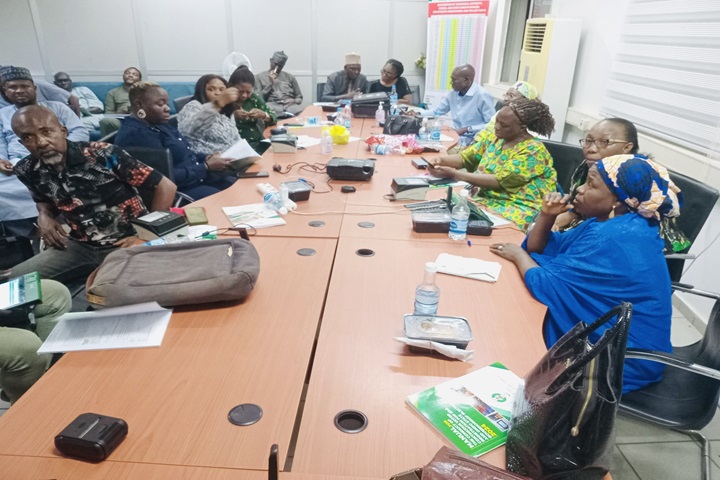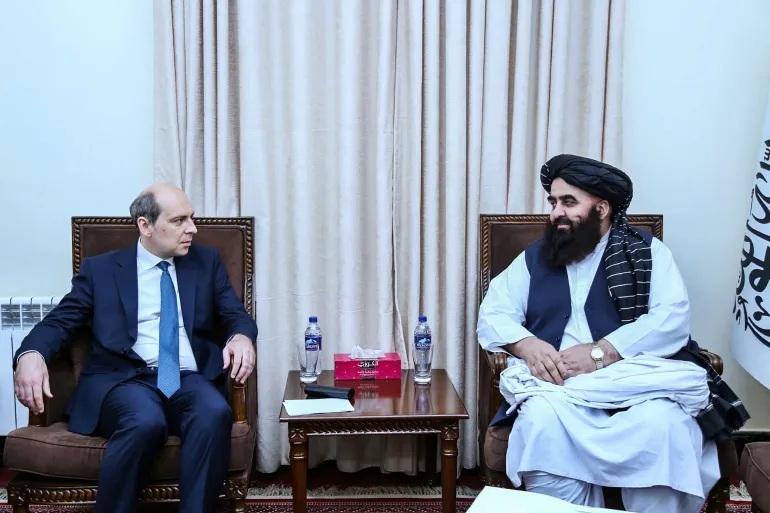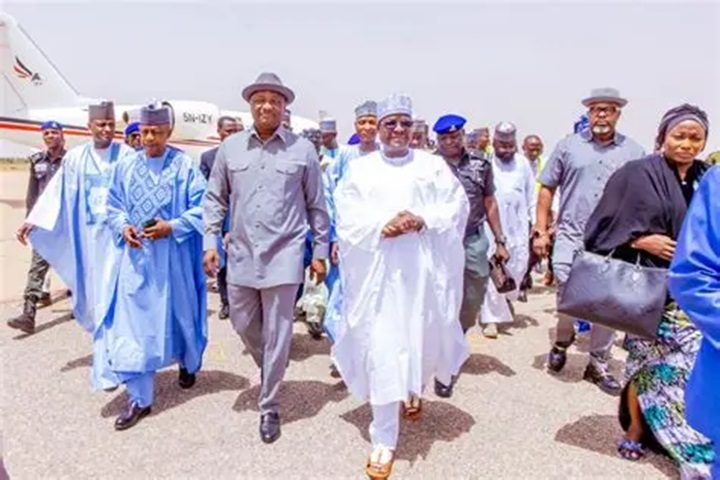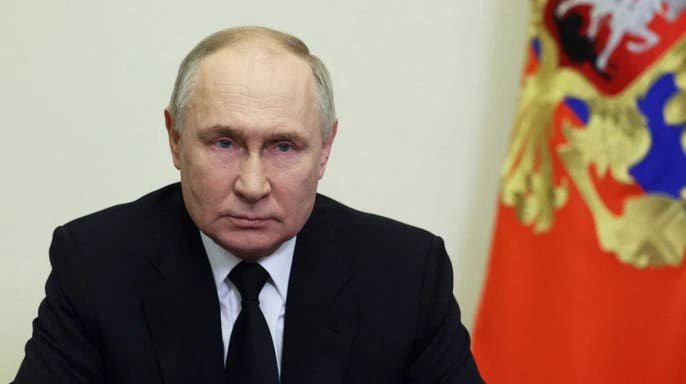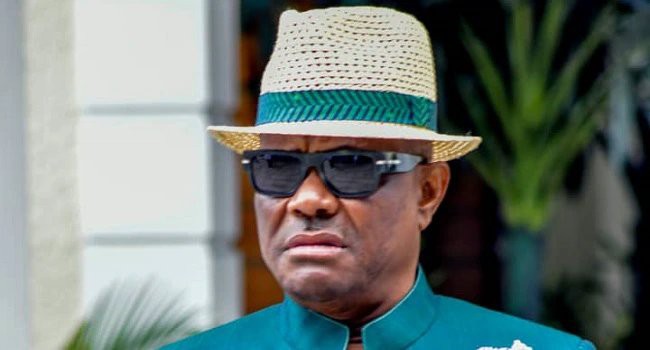Politics
Pope Leo: Find out why Robert Prevost adopted “Pope Leo XIV” as title

Various permutations are currently going on globally over what may have prompted Cardinal Robert Prevost to adopt “Pope Leo XIV” as his official title as a successor of Pope Leo XIII. Have you been wondering the same?
Before we surge forward, it could be remembered that Diaspora Digital Media (DDM) reported that Cardinal Prevost, a Chicago-born priest, emerged as the new pope.
Prevost was named the 267th Pope on Thursday, May 8, 2025.
Read more below:
BREAKING: American Cardinal—Robert Prevost emerges new pope
At first glance, one will be caught with the magical semblance evident among the two Popes.
An observer even noted that they closely resembled each other that they could easily pass for twins.
However, beyond semblance what else do we know about them? Let’s dig…
Pope Leo XIV
is the head of the Catholic Church and sovereign of Vatican City State since 2025. He is the first North American to be elected pope.
According to records obtained from Wikipedia, Pope Leo XIV was born Robert Francis Prevost on September 14, 1955, in Chicago, Illinois, United States.
Prevost spent the early part of his career working for the Augustinians in Chicago.
He would later serve in Peru from 1985 to 1986 and from 1988 to 1998 as a parish pastor, diocesan official, seminary teacher and administrator.
He served as Bishop of Chiclayo in Peru from 2015 to 2023 and was general of the Order of Saint Augustine from 2001 to 2013.
Prevost was made a cardinal in 2023 by Pope Francis and was appointed prefect of the Dicastery for Bishops.
He would later become the president of the Pontifical Commission for Latin America in 2023.
As a child, he served as an altar boy at St. Mary of the Assumption Church on the far South Side of Chicago.
Prevost completed his secondary studies at the minor seminary of the Order of St. Augustine in 1973.
He earned a Bachelor of Science degree in mathematics at Villanova University, Pennsylvania, U.S., in 1977.
When Prevost decided to become a priest, he joined the Order of St. Augustine in September 1977.
He would take his first vows in September 1978 and his solemn vows in August 1981.
He was awarded a Master of Divinity degree from the Catholic Theological Union in Chicago.
Prevost was ordained a priest by Archbishop Jean Jadot for the Augustinians in Rome on June 19, 1982.
He earned a Licentiate of Canon Law in 1984 and a Doctor of Canon Law degree in 1987 from St. Thomas Aquinas in Rome.
Prevost jserved as chancellor of the Territorial Prélature of Chulucanas in Peru from 1985 to 1986.
He returned to Peru in 1988, spending the next ten years heading the Augustinian seminary in Trujillo, teaching canon law.
He also served as judge of the regional ecclesiastical court and a member of the College of Consultors of Trujillo.
In 1999, Prevost returned and became provincial of the Augustinian Province of Chicago.
In 2001, he began a six-year term as Prior General of the Augustinians, later a second six-year term in 2007.
From 2013 to 2014, Prevost served as director of formation in the Convent of St. Augustine in Chicago, as well as first councilor and provincial vicar of the province of Our Mother of Good Counsel.
In 2014, Pope Francis appointed him as apostolic administrator of the Diocese of Chiclayo in Peru and titular bishop of Sufar.
He received his episcopal consecration on in 2014 at St. Mary’s Cathedral in Chiclayo, and in 2015 was named bishop of Chiclayo.
In 2019, Prevost was appointed a member of the Congregation for the Clergy in Rome and apostolic administrator of Callao in Peru 2020.
Francis named him same year a member of the Congregation for Bishops.
Within the Episcopal Conference of Peru, Prevost served on the permanent council for the 2018 to 2020 term.
In 2023, Francis appointed Prevost prefect of the Dicastery for Bishops and was later appointed cardinal-deacon of Chapel of Santa Monica degli Agostiniani in Rome.
He promoted him to cardinal-bishop in 2025, assigning him to the Suburbicarian Diocese of Albano in the Province of Rome.
On 8 May 2025, the second day of the 2025 papal conclave, Prevost became the first Pope from North America.
He took the papal name Leo XIV, following on from Leo XIII.
Leo XIII in 1810 to 1903
According to data mined from Wikipedia, Pope Leo XIII was born Gioacchino Vincenzo Raffaele Luigi Pecci on 2 March 1810.
Pecci was head of the Catholic Church from 20 February 1878 until his death in July 1903.
He enjoyed the fourth-longest reign of any documented pope and the third-longest verified reign.
He is well known for his intellectualism and attempts to align the Catholic Church to modern thinking.
In 1891, Pope Leo outlined the rights of workers to a fair wage, safe working conditions, and the formation of trade unions.
He also affirmed the rights to property and free enterprise, opposing both socialism and laissez-faire capitalism.
With that encyclical, he became popularly titled as the “Social Pope” and the “Pope of the Workers”.
He was credited with creating the foundations for modern thinking in the social doctrines of the Catholic Church.
He influenced the Mariology of the Catholic Church and promoted both the rosary and the scapular.
In 1837, Pope Gregory XVI appointed the 27-year-old Pecci as personal prelate even before he was ordained a priest on in 1837 by the Cardinal Vicar Carlo Odescalchi.
Shortly thereafter, Gregory XVI appointed Pecci as Papal legate (provincial administrator) to Benevento, the smallest Papal province.
The main problems facing Pecci were a decaying local economy, insecurity from widespread bandits.
Others were pervasive Mafia or Camorra structures, which were often allied with aristocratic families.
Pecci arrested the most powerful aristocrat in Benevento and his troops captured others, who were either killed or imprisoned by him.
With public order restored, he turned to the economy, reforming the tax system to stimulate trade with the neighboring provinces.
Upon his election in 1878, he immediately sought to revive Thomism, the theological system of Augustine of Hippo and Thomas Aquinas.
He referred to Thomism as the official political, theological and philosophical foundation for the Catholic Church.
Pecci sponsored the Editio Leonina in 1879 as a result.
Leo XIII is particularly remembered for his belief that pastoral activity in political sociology.
He stressed it is a vital mission of the church as a vehicle of social justice and maintaining human rights and dignities.
Leo XIII issued a record of eleven papal encyclicals on the rosary, earning him the title of the “Rosary Pope”.
In addition, he approved two new Marian scapulars.
He was the first pope never to have held any control over the Papal States.
It had been dissolved by 1870 since Stephen II in the 8th century.
Similarly, many of his policies were oriented towards mitigating the loss of the Papal States in an attempt to overcome the loss of temporal power.’
After his death in 1903, he was buried in the Vatican Grottoes.
His remains will be later transferred in 1924 to the Basilica of Saint John Lateran.
Evidently, aside from looks and papacy, there was nothing the two Pope Leos shared in common between them.
It is, however, left to be seen if Pope Leo XIV will deploy the reformation pattern of Pope Leo XIII.
For Diaspora Digital Media Updates click on Whatsapp, or Telegram. For eyewitness accounts/ reports/ articles, write to: citizenreports@diasporadigitalmedia.com. Follow us on X (Fomerly Twitter) or Facebook



